How To Make My Ultimate Homemade Chinese Chili Oil
Are you ready to take your condiment game to the next level? My ultimate homemade Chinese chili oil recipe (辣椒油) is the way to elevate your dish! This jar of homemade goodness is infused with hot Sichuan chili peppers, Sichuan peppercorns, and other aromatics and spices. This spicy and fragrant condiment is the fundamental base of many delicious Chinese dishes. Since I’ll be rolling out more recipes that will go hand in hand with this sauce within the coming weeks, learning how to make this chili oil will help you get further along with other recipes, this classic Chinese goodness is my secret weapon for creating lip-smacking, finger-licking Chinese cuisine.
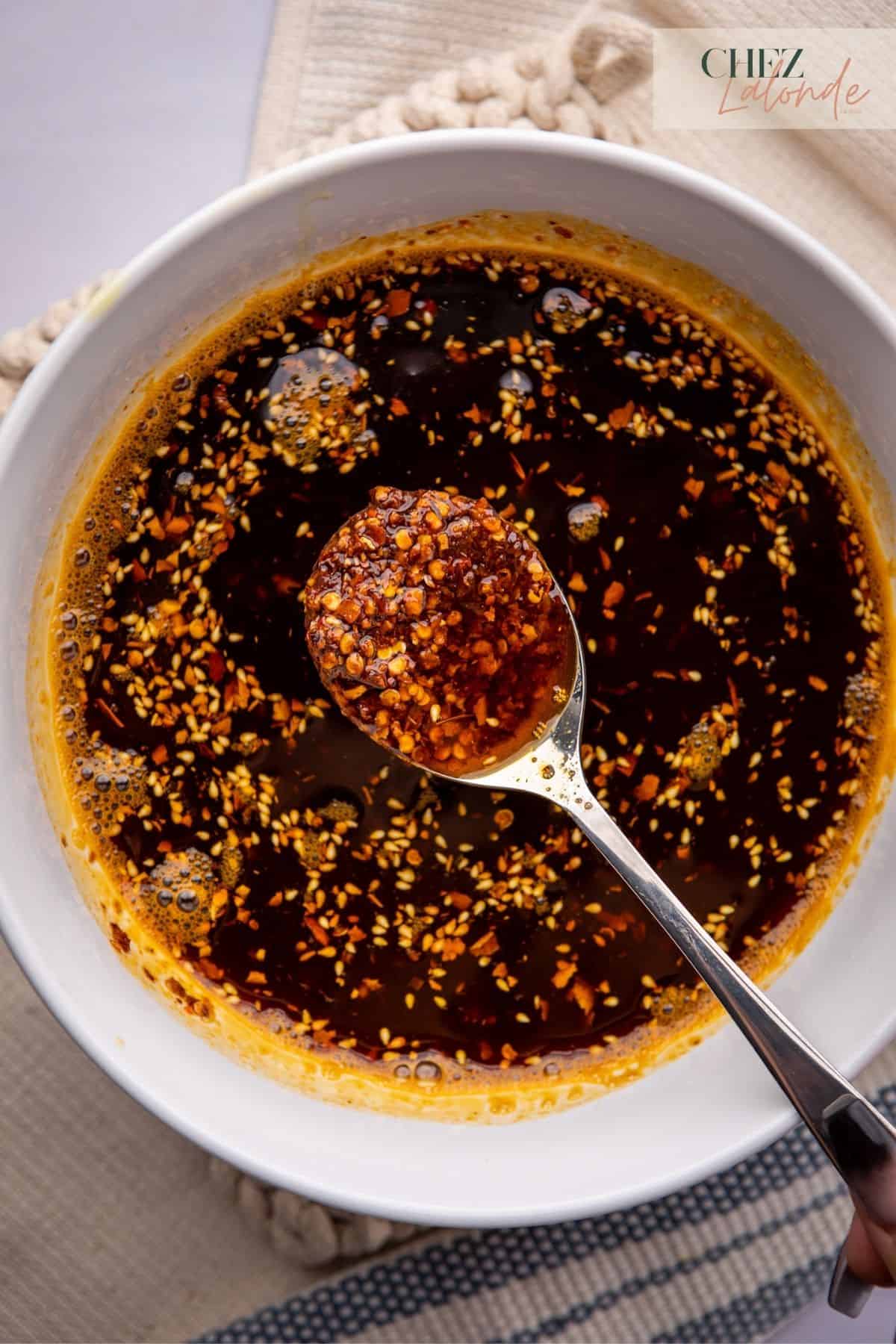
Disclaimer Notice: This website contains affiliate links. If you make a purchase through these links, I may earn a commission at no extra cost to you. I only endorse products or services I believe will be valuable to my readers. I appreciate your support.
In today’s post, I’ll share my favorite chili oil recipe, perfect for adding a spicy flavor to various dishes, from noodle soup, dipping sauce for Air fryer tofu, and fried rice to cold appetizers like Chinese Cucumber Salad and even pizza. If you’re a fan of Sichuan cuisine’s numbing sensation and fiery taste, keep reading because I assure you once you learn this recipe, you will not return to the store-bought one again. So put on your apron and join me in the kitchen as we take your Chinese dishes to a new level by crafting your own jar of Chinese yumminess.
Recipe Snapshot
EASE: Easy to make and is better than store-bought.
PROS: This spicy chili oil can go with anything.
CONS: Not for people who dislike spicy food.
WOULD I MAKE THIS AGAIN? Absolutely! This can be a great housewarming gift.
What is Sichuan-style Chinese chili oil made of?
Chinese Chili oil is a must-have condiment in Chinese cuisine, along with soy sauce, oyster sauce, and Chinese black vinegar. It is a spicy condiment that infuses hot chili peppers in oil with additional seasonings and aromatics such as garlic, ginger, and Sichuan peppercorns. Although the recipe can vary, and there are tons of different recipes out there, the basic process involves heating the oil with some aromatics and letting your ingredients be infused for a short period of time, then pouring them over dried chili flakes, and voila…
A flavor explosion in every bite!

How does the taste and quality of homemade chili oil compare to store-bought versions?
- Fresher ingredients: When you make your chili oil, you have control over the ingredients you use. You can use fresh, high-quality spices and peppers, resulting in a fresher and more flavorful condiment than store-bought ones that may have been sitting on the shelves for a long time.
- Customizable heat level: You can adjust the heat level with your homemade chili oil. You can use fewer pepper flakes if you prefer a milder version; you can add more if you like it spicier. Store-bought chili oils have a fixed heat level that may not suit everyone’s taste. They are sometimes a bit too salty too.
- Unique flavor profile: By making your chili oil, you can experiment with different spices and peppers to create a unique flavor profile that suits your taste buds. Store-bought chili oils may have a generic taste, but with homemade ones, you can create a flavor that is one-of-a-kind and tailor-made for your dishes.
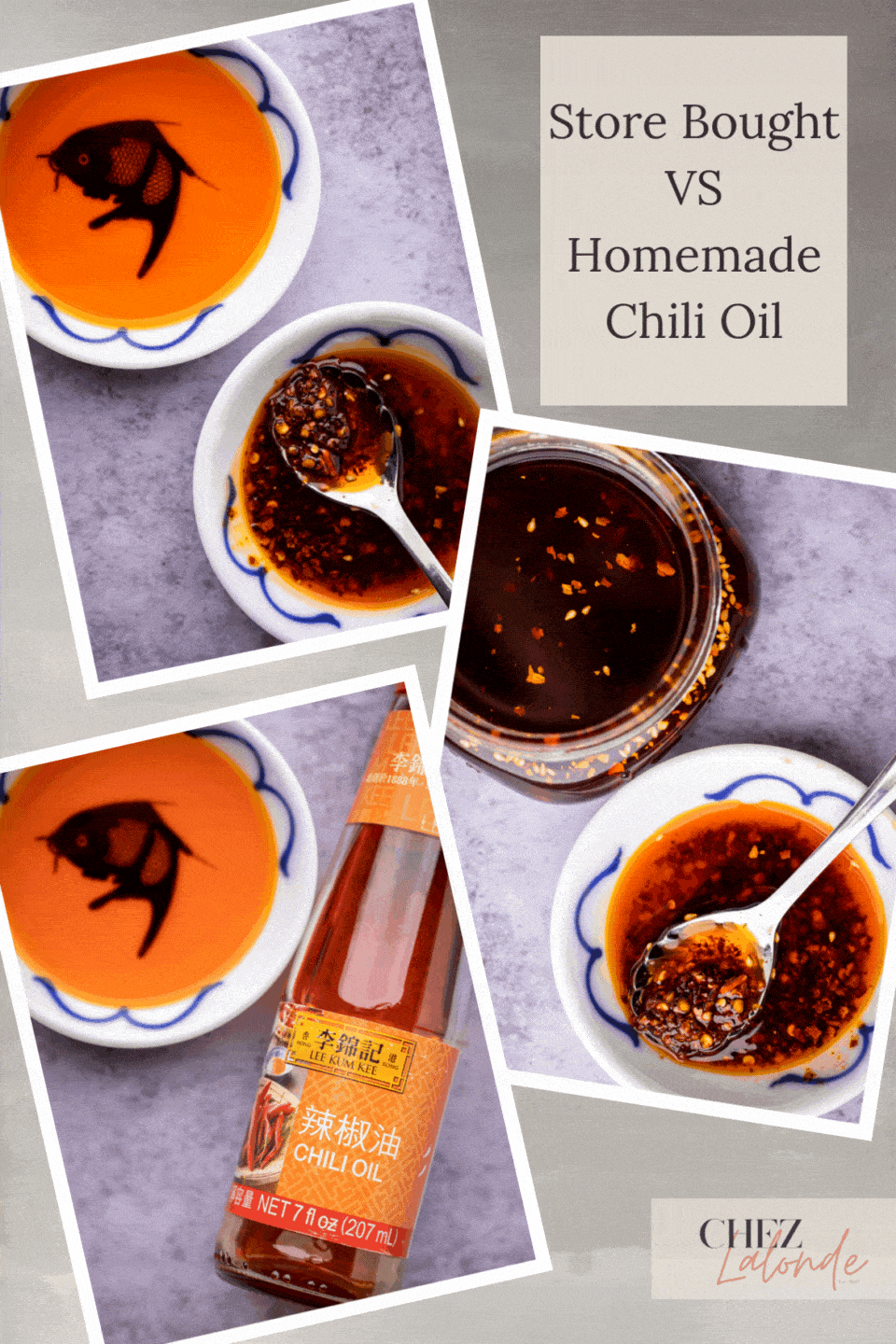
What is the difference between Chinese Chili oil, Chili paste, and Chili Crisp?
These are all popular Chinese spicy condiments, but their main differences are their texture, consistency, and usage.

Chili Oil
- It infuses hot chili peppers in oil with other aromatics such as garlic, ginger, and other dried herbs.
- Has a thinner, more liquid consistency.
- Typically used by drizzling or spooning onto dishes.
Chili Paste
- It is made by grinding chili peppers into a thick, spreadable paste.
- It may contain additional ingredients like vinegar, sugar, or soy sauce.
- Often used as a condiment or cooking ingredient.
- It can add depth and heat to a variety of dishes.
Chili Crisp
- It is a chunky, textured condiment made with chopped fried chili peppers.
- It has a crunchy texture and bold flavor.
- It is often used as a finishing touch to add texture and heat to a dish.
- It can double as a garnish or dipping sauce for dumplings or rice.

What kind of oil should I use in this recipe?
I tested this recipe with vegetable, canola, and other natural oils. Ultimately, I learned that the traditional way to make this chili oil is to use Rapeseed oil. It was the best result of all. Rapeseed oil is extracted from the seeds of the rapeseed plant; it has a neutral flavor and a high smoke point, so it is suitable for high-heat cooking. This oil can withstand high temperatures of up to 400F. So it will not burn your ingredients.
Why can’t we use other peppers to substitute Sichuan pepper flakes for this recipe?
First, let’s look at the difference between these pepper flakes so you can better understand why we MUST use Sichuan Pepper flakes for this recipe:
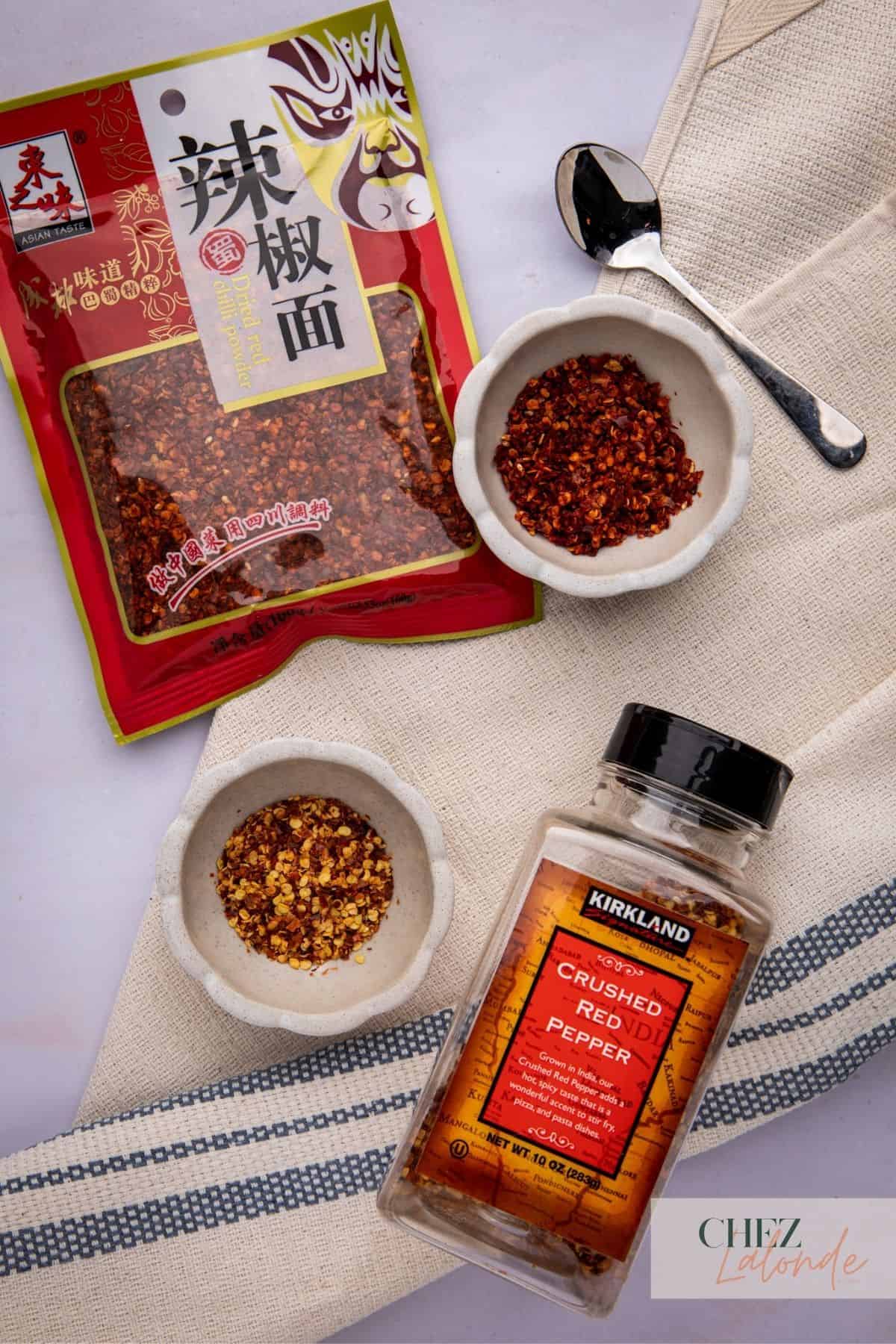
Korean gochugaru:
It is made from sun-dried Korean chili peppers and has a smoky, fruity, and slightly sweet taste with medium heat.
Sichuan pepper flakes:
Their unique flavor profile sets them apart from other pepper flakes. They are distinctly citrusy and would give a combination of spicy and numbing flavors that create a tingling sensation in the mouth.
Italian pepper flakes:
They are made from dried red chili peppers and have a more straightforward spicy, and sharper taste than Sichuan pepper flakes.
Now you understand to achieve the authentic numbing flavor and distinctive taste of a Sichuan-style Chinese chili oil, it’s crucial to use Sichuan pepper flakes. Italian pepper flakes and Korean Gochugaru do not provide the same complexity and depth of flavor as Sichuan pepper. So, make sure to source Sichuan pepper flakes for this recipe to experience the true essence of Chinese chili oil.
What are Sichuan flower peppercorns, and which one should I use?
The Sichuanese refer to the Sichuan peppercorns as “Hua Jiao,” meaning flower pepper, due to its unique, fully opened heart-shaped pods resembling a six-petaled flower.
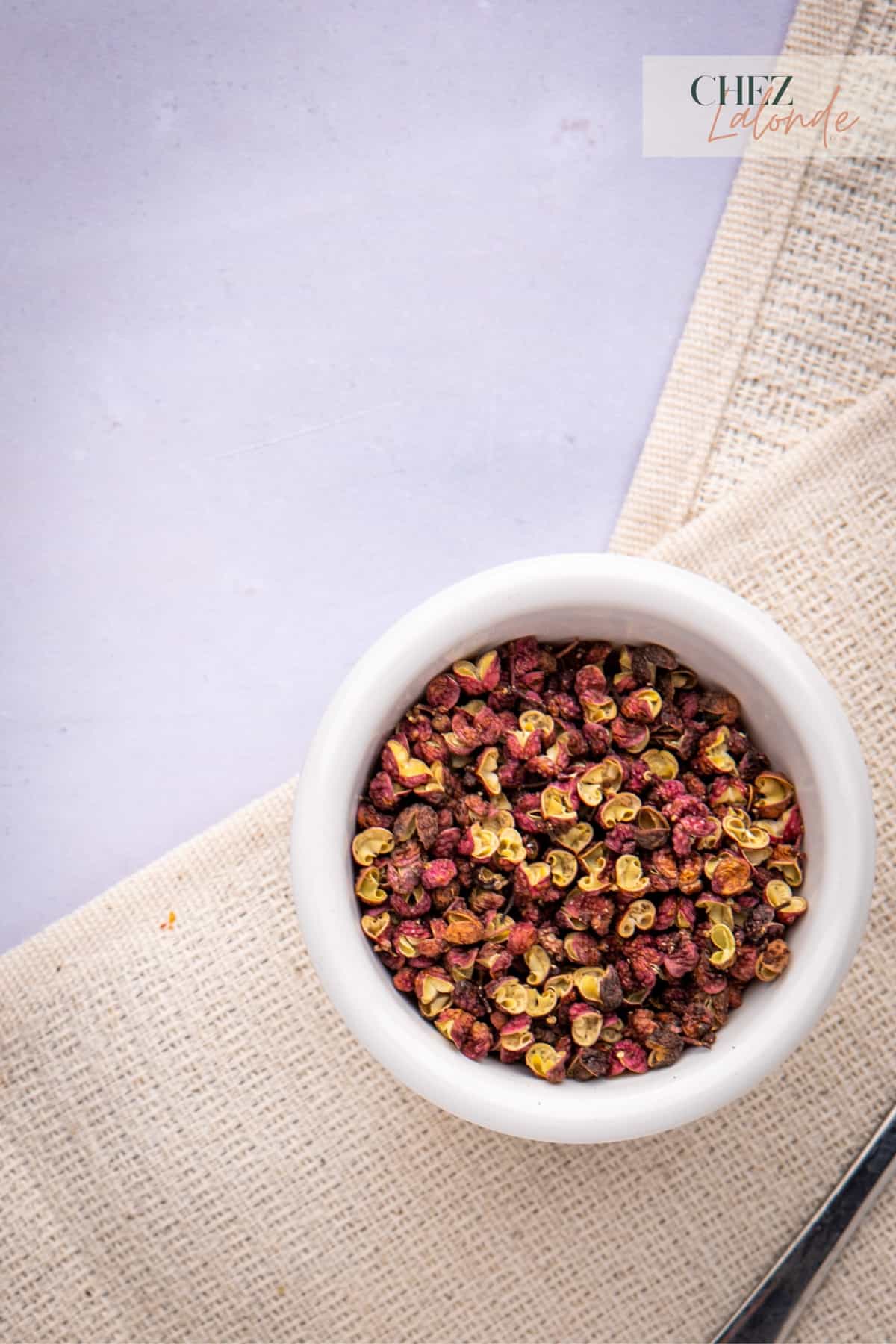
I used one of the Sichuan peppercorn varieties in my Chili oil recipe called “ Da Hong Pao” (Meaning Big Red Robe in Chinese). It is known for its exceptional quality and is highly sought by chefs and food enthusiasts. When used in cooking, Da Hong Pao Sichuan peppercorn imparts a complex, floral flavor and a distinctive numbing sensation, adding depth and dimension to the sauce. You can find this peppercorn in your local Asian Supermarket or online at The Mala Market.
Ingredients needed for this recipe

We’ll divide the ingredients into two groups: Group 1 is for infusing the oil, and Group 2 is the chili oil sauce’s base.
Let’s delve into each group to see what’s required:

Group 1 – Infused Oil ingredients:

Note*Only add the ingredients from rapeseed oil to fennel seeds in the oil infusion process, excluding the ones listed below.*
- Rapeseed oil – Traditionally used in Chinese chili oil, it has a high smoking point and neutral flavors, making it an ideal option.
- Aromatics Selections – Using the following aromatics when infusing Chinese chili oil provides a harmonious blend of flavors and aromas that enhances the overall taste of the chili oil, which complements the rapeseed oil’s nutty and slightly floral taste.
- Green onion – Provides a subtle sweetness.
- Fresh Ginger – Adds a warm, spicy kick.
- Garlic & Shallot – Add a pungent and savory note.
- These aromatics contain natural oils that are soluble in oil, and when heated, they release their flavorful oils into the oil. Together, these aromatics create a symphony of flavors that elevate the chili oil to a whole new level of deliciousness. The well-rounded flavor profile and the dried chili ingredients make this condiment even more appetizing.
- Essential Spices – Each of these spices plays a crucial role in infusing Chinese chili oil with its distinct and complex flavor profile.
- Cassia Cinnamon – Lends a warm, sweet note.
- Sichuan Peppercorn – I used the version called Dai Hong Pao. But you can substitute it with another kind of Sichuan peppercorn. It adds a numbing and floral element that’s unique to this spice.
- Dried Bay Leaves – Provide an earthy and slightly bitter taste
- Star Anise pods – Bring a subtle licorice flavor
- Dried cloves – Offer a deep, warm aroma
- White whole cardamom – Adds a citrusy and fragrant note.
- Fennel Seeds – Contribute a slightly sweet and refreshing taste.
Altogether, these spices create a deeply aromatic and richly flavored chili oil that elevates any dish.

Group 2 – Chili Oil Base dried ingredients:
- Sichuan red pepper flakes – This is the soul of this condiment. They provide a unique and distinct flavor profile that other chili flakes cannot replicate. Only this type of pepper flake provides that signature numbing and citrusy flavor. This is something no other pepper can replicate.
- White Sugar – To balance the spiciness and provide a hint of sweetness in the chili oil.
- Sea Salt – Enhance flavor and extend the shelf life of chili oil.
- Toasted sesame Oil – Enhancing overall taste and aroma. It also adds a nutty and aromatic flavor to the chili oil.
- Five Spice Powder – Adds depth and complexity to the flavor profile of the chili oil.
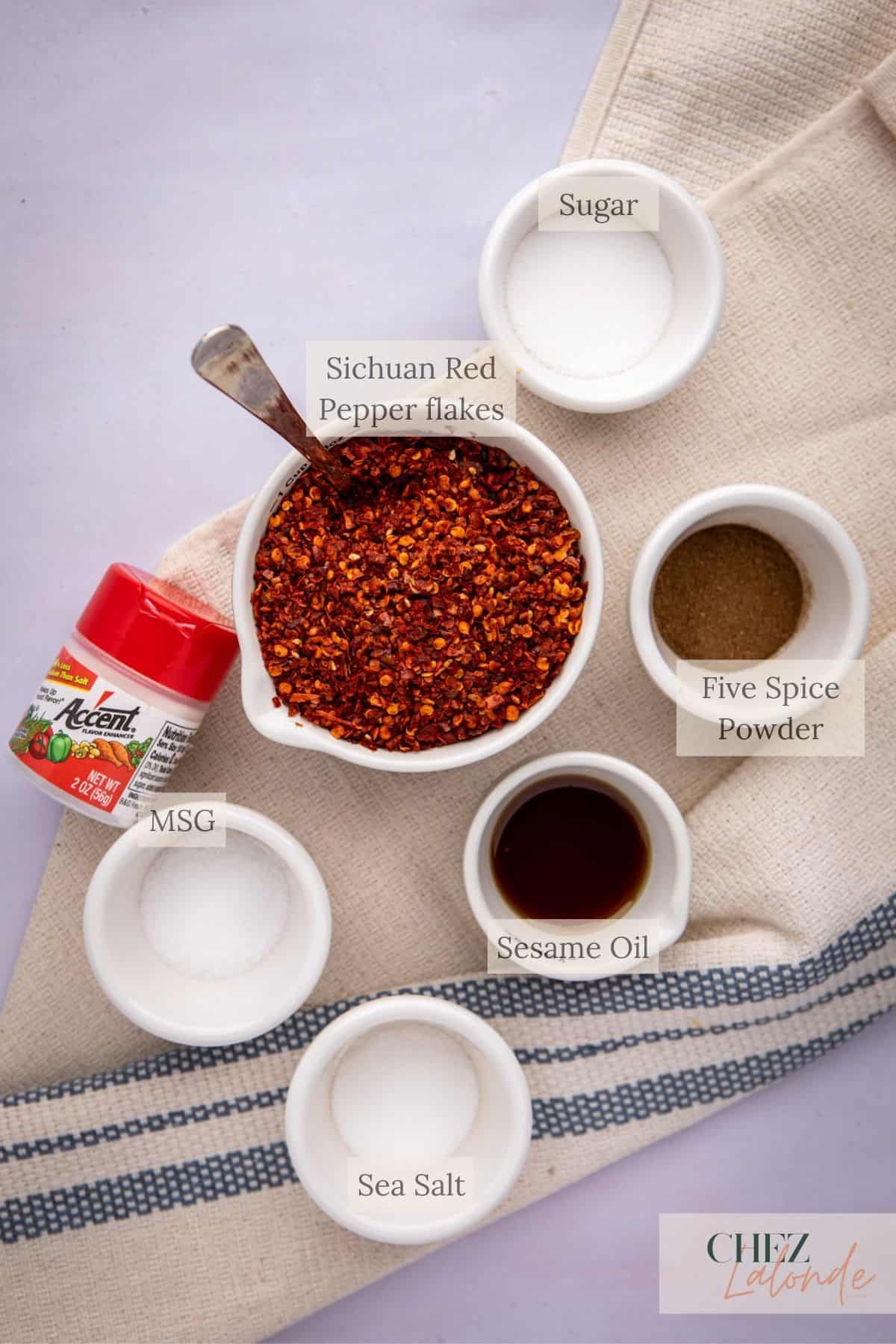
Optional add-in:
MSG – Also known as monosodium glutamate, is a commonly used flavor enhancer in restaurant foods, canned food, and other products. While it is optional to use in this recipe, adding a teaspoon of MSG can help to round out the flavor and enhance the taste of the chili oil.

Don’t know how to use these Asian sauces & condiments?
Check Out My Chinese Pantry Essential Guide To Learn More
Recipe notes & tips:
Only use Rapeseed oil:
Trust me; I have tested all before I write this post. Any other oil sucks! I recommend you only use Rapeseed oil for this recipe because it is a neutral-flavored oil with a high smoke point, so it can be heated to high temperatures without burning. This makes it a great choice for making Chinese chili oil because it allows the chili flakes to infuse with the oil at high temperatures without imparting any unwanted flavors. Additionally, rapeseed oil has a light and clean taste that won’t overpower the flavors of the chili flakes or other ingredients in the recipe.
Be patient:
For making this recipe, you need to use a cooking thermometer to monitor it closely for a minimum of 30 minutes to a maximum of one hour to ensure the oil reaches the right temperature and is not overheating. Otherwise, all the aromatic would burn and leave with a bitter burn flavor. Just cook the oil on low heat, let it simmer, and low fried the aromatics. This slow frying process allows all the aromatics to release flavor into the oil.
The magic ratio between oil and pepper flakes:
After conducting multiple taste tests at home, I discovered this recipe’s perfect formula and balance. The ideal ratio between the oil and Sichuan pepper flakes is 2:1, meaning you should use 2 parts oil to 1 part pepper flakes. This will help you achieve a consistent texture every time you make it, regardless of the quantity.
Use the right ingredients:
Here is a photo showcasing some ingredients you might mistakenly use. Make sure you get the right thing.

How to make this classic Chinese chili oil?
Step One – Gather all ingredients and measure them accurately.
Slice the ginger thickly to avoid burning, and cut the shallot in half after peeling. Don’t worry about chopping the garlic or the aesthetics of the aromatics, as they will be discarded later. Avoid cutting them too finely to prevent burning during the slow frying process.
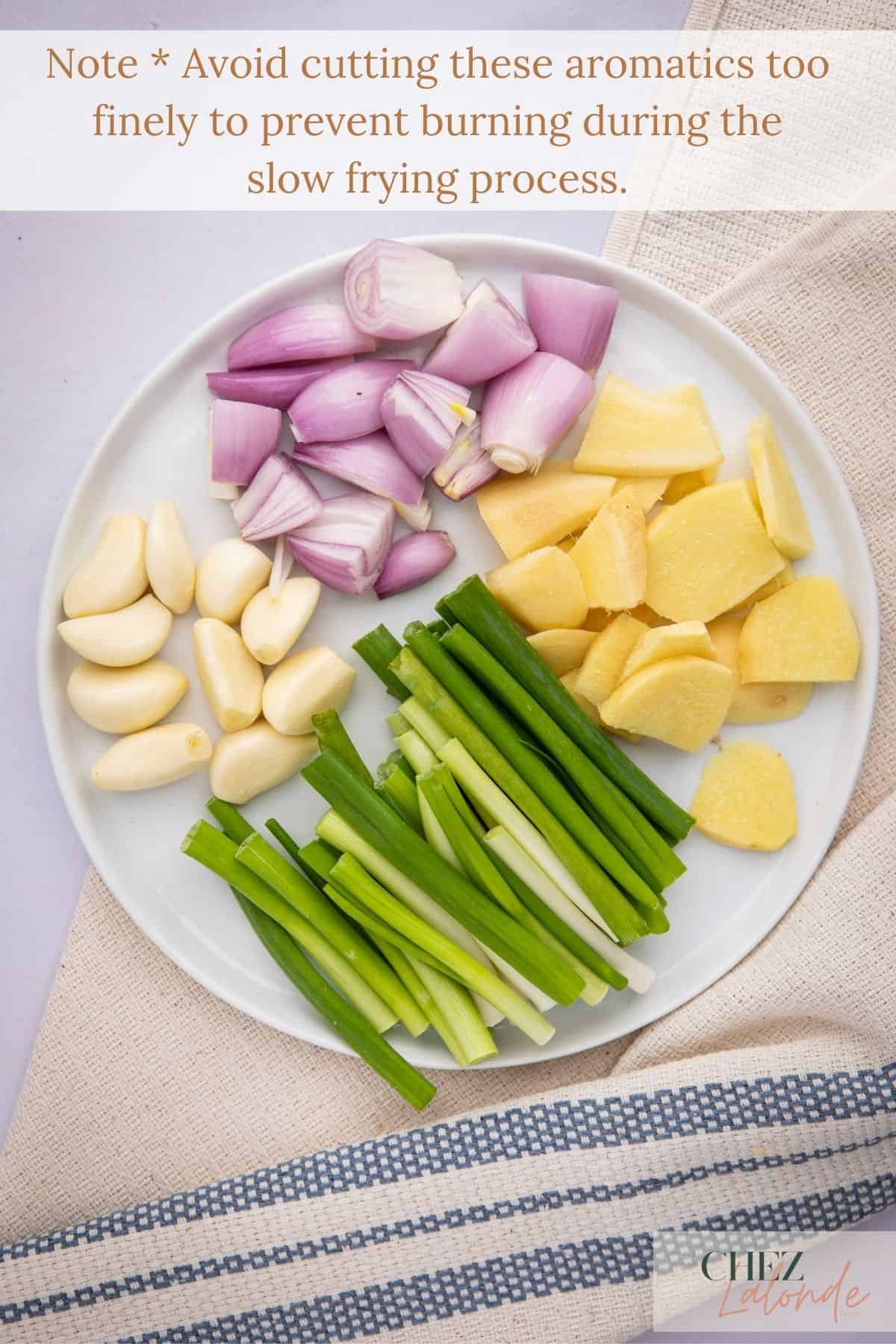
Step Two – Combine group 1 ingredients in a saucepan.
Add rapeseed oil, aromatics, and spices in a small saucepan and cook over medium-low heat until small bubbles form. Use a cooking thermometer to check the temperature and lower the heat once it reaches 230 to 250F.
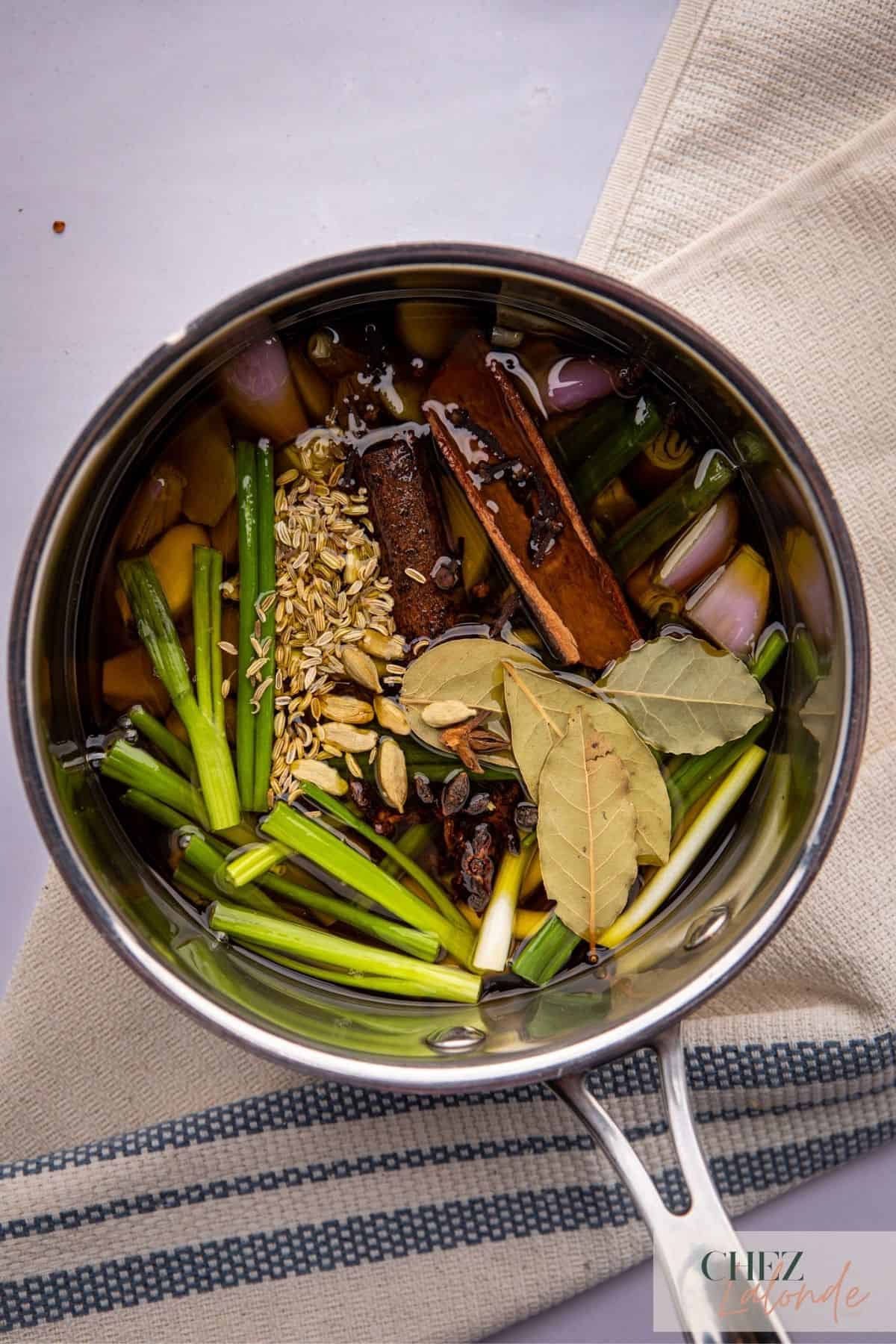


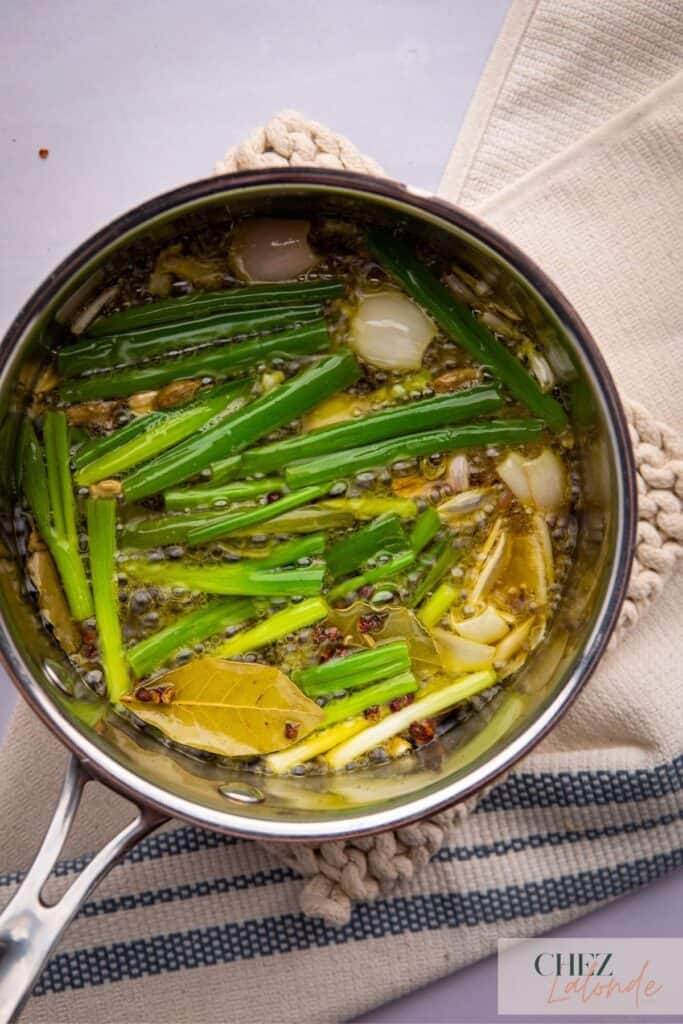
Step Three – Cook and infuse the oil:
Maintain the temperature between 230 to 250F for at least 30 minutes and up to an hour. Monitor the heat and prevent it from going above 250F. The longer you infuse the oil, the more flavorsome it will become, so be patient.
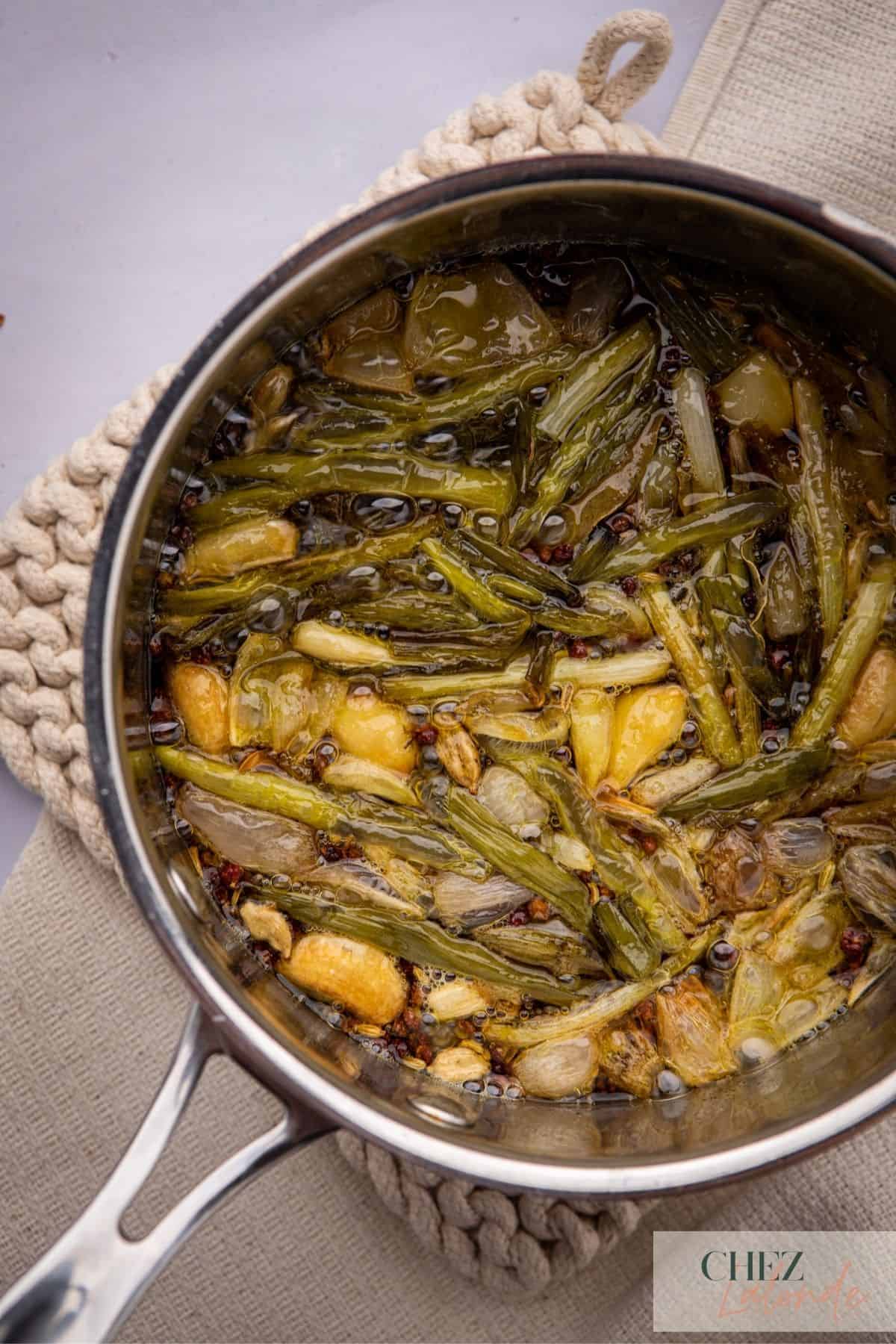

Step Four – Combin group 2 ingredients:
Mix Sichuan pepper flakes, sugar, salt, and sesame oil in a separate heat-proof bowl while the oil infuses. MSG can be added or omitted at this point. Set the mixture aside.
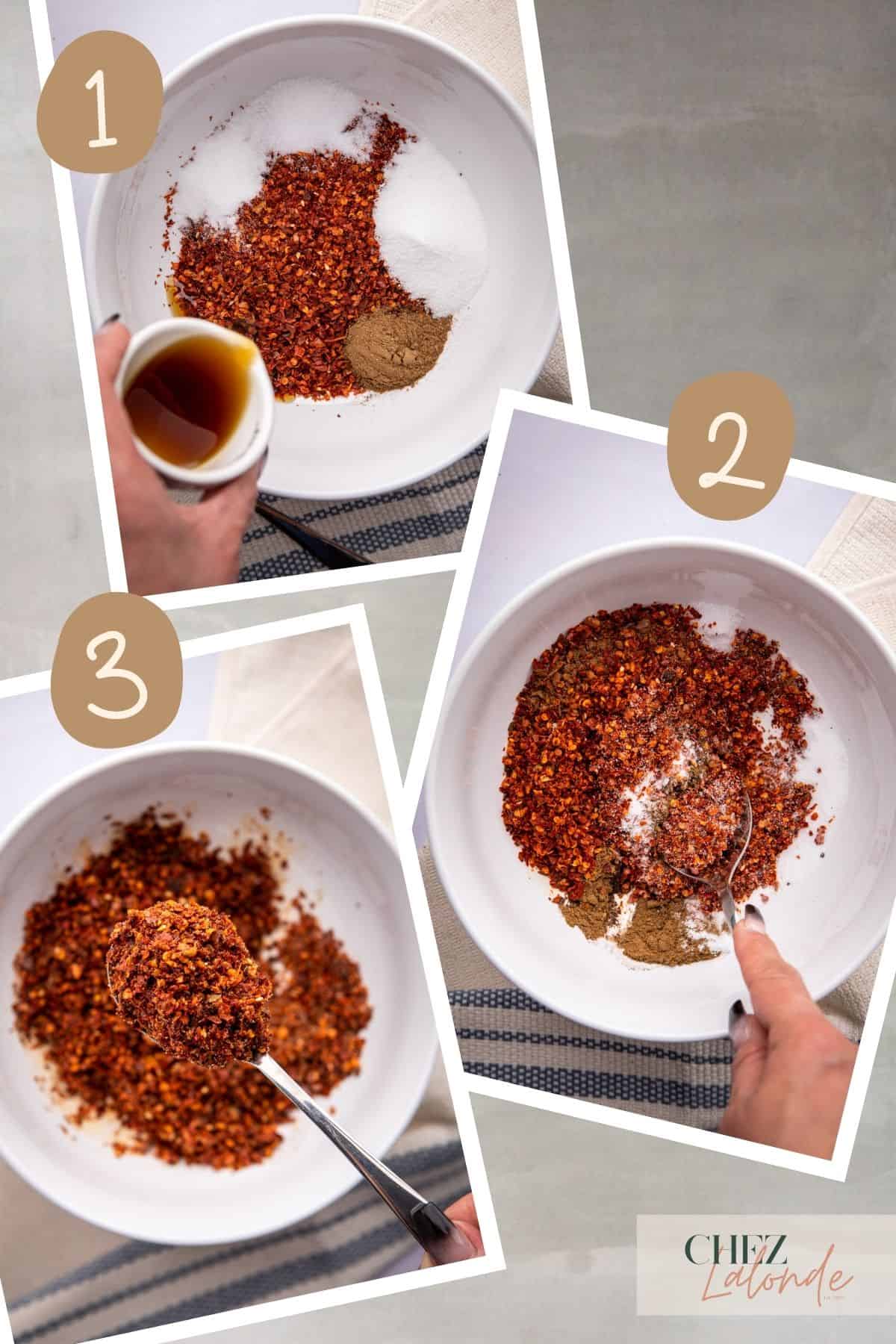
Step Five – Remove aromatics from oil
After the oil is infused for your desired time (30 mins, 45 mins, or an hour), remove all the spices and aromatics from the infused oil with help using a metal fine-mesh strainer and discard them.


Step Six – Heat oil to 380F:
Carefully heat the oil to 380F, then slowly pour it into the Sichuan pepper mixture in three separate additions, being cautious as it will sizzle vigorously.
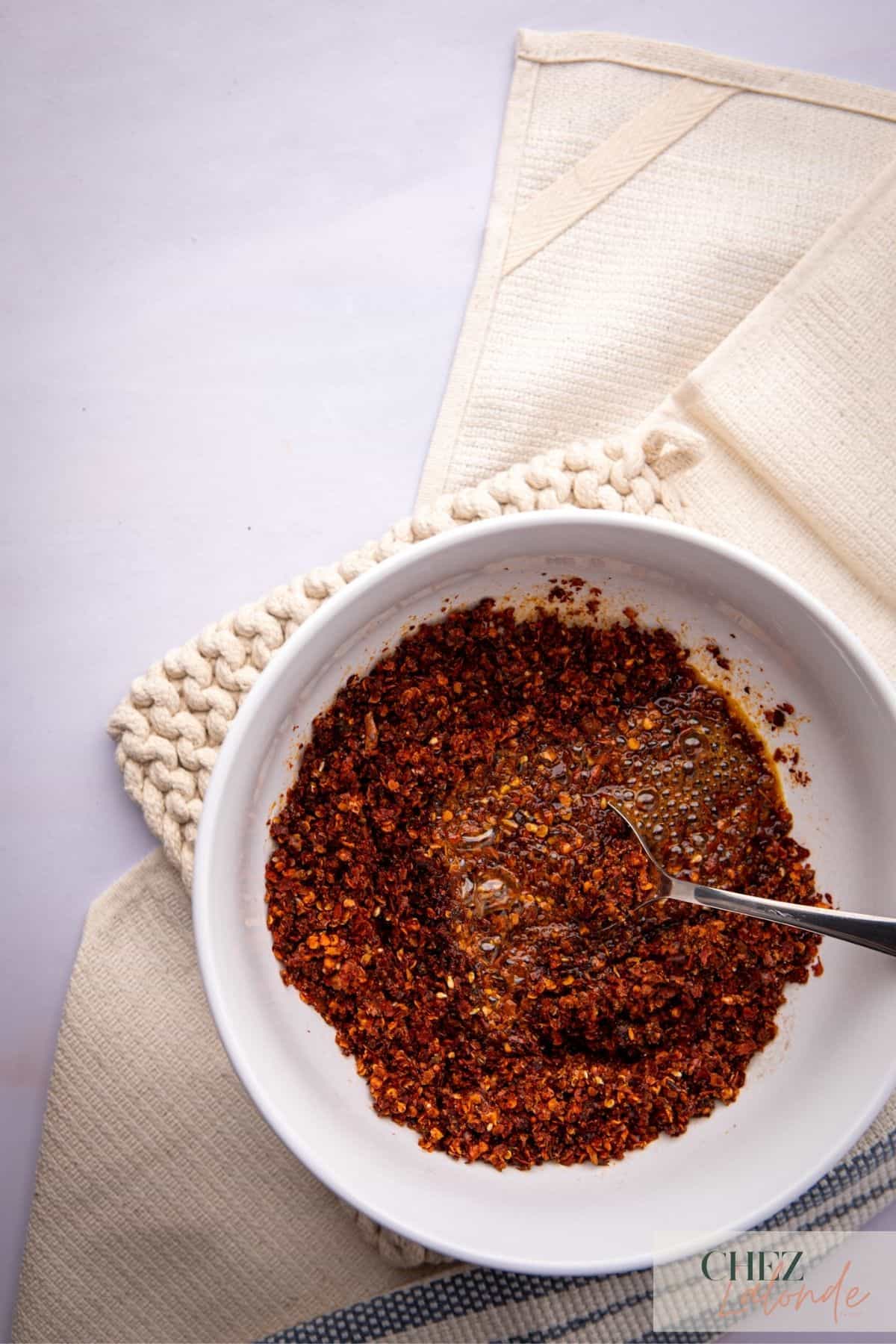
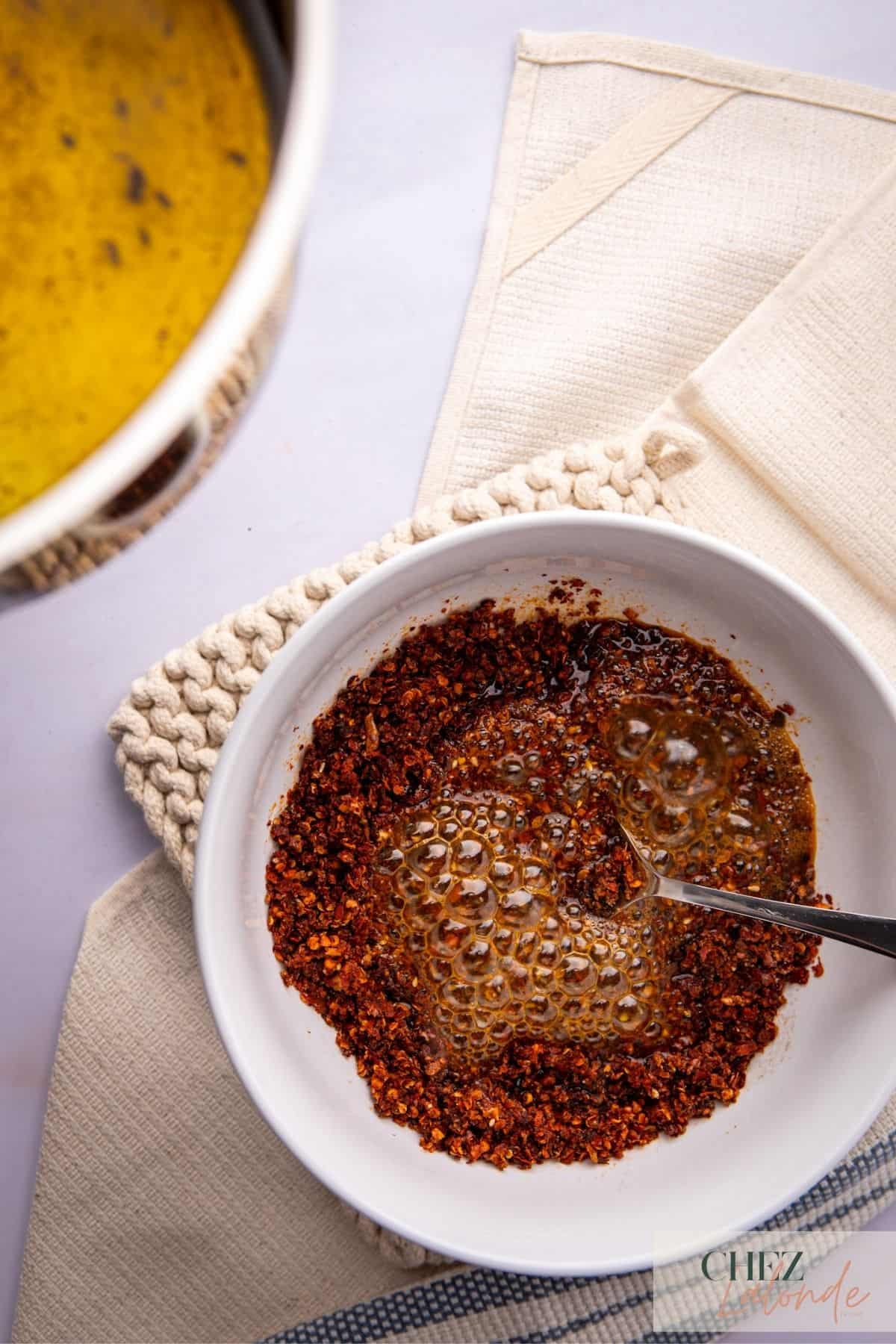

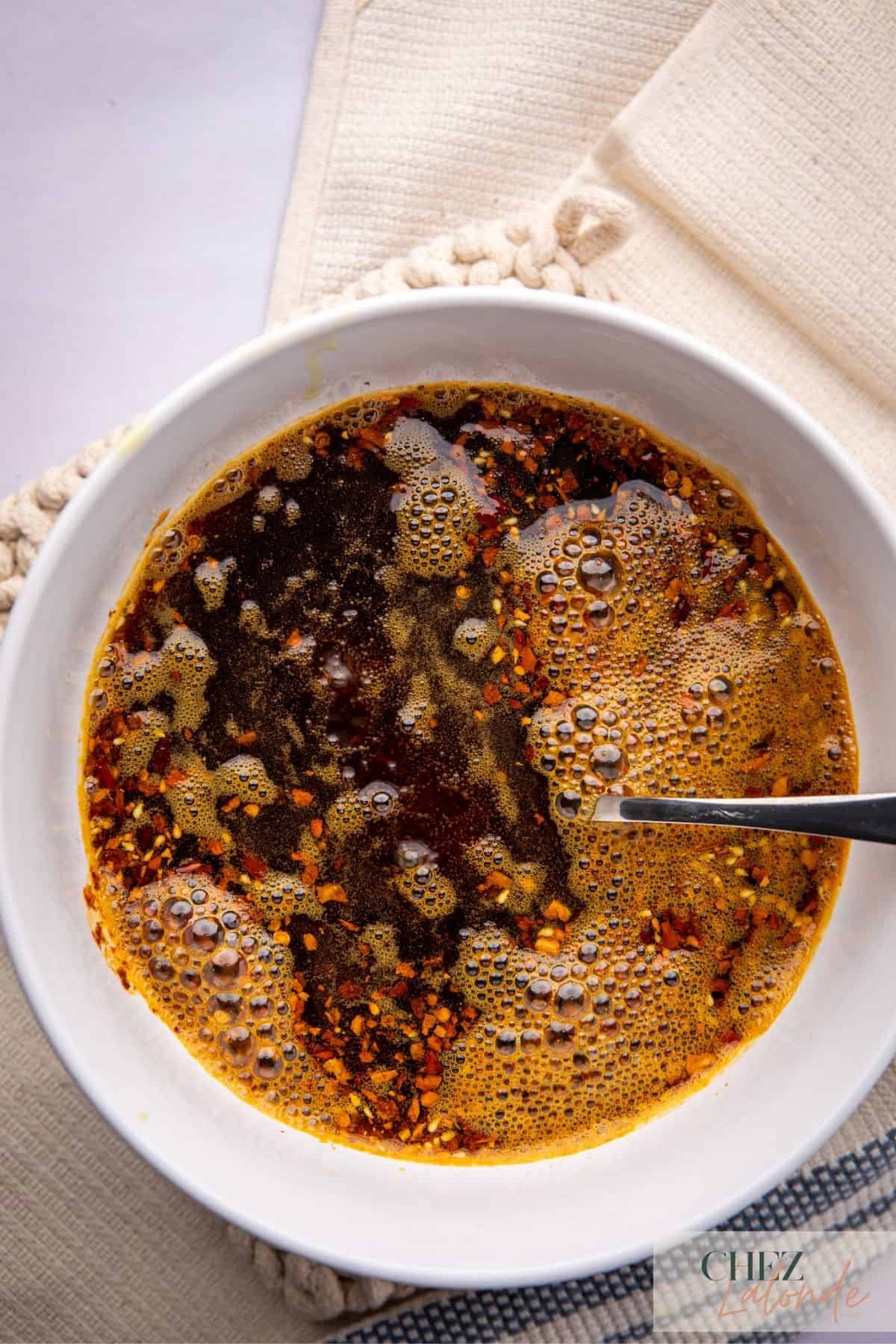
Step Seven – Chill, transfer to a glass jar, and store:
Allow the chili oil to cool to room temperature, then transfer it to a glass or Mason jar. It can be stored in the refrigerator for up to 6 months. You can let it infuse even more flavor for a few extra days before using it. Enjoy!
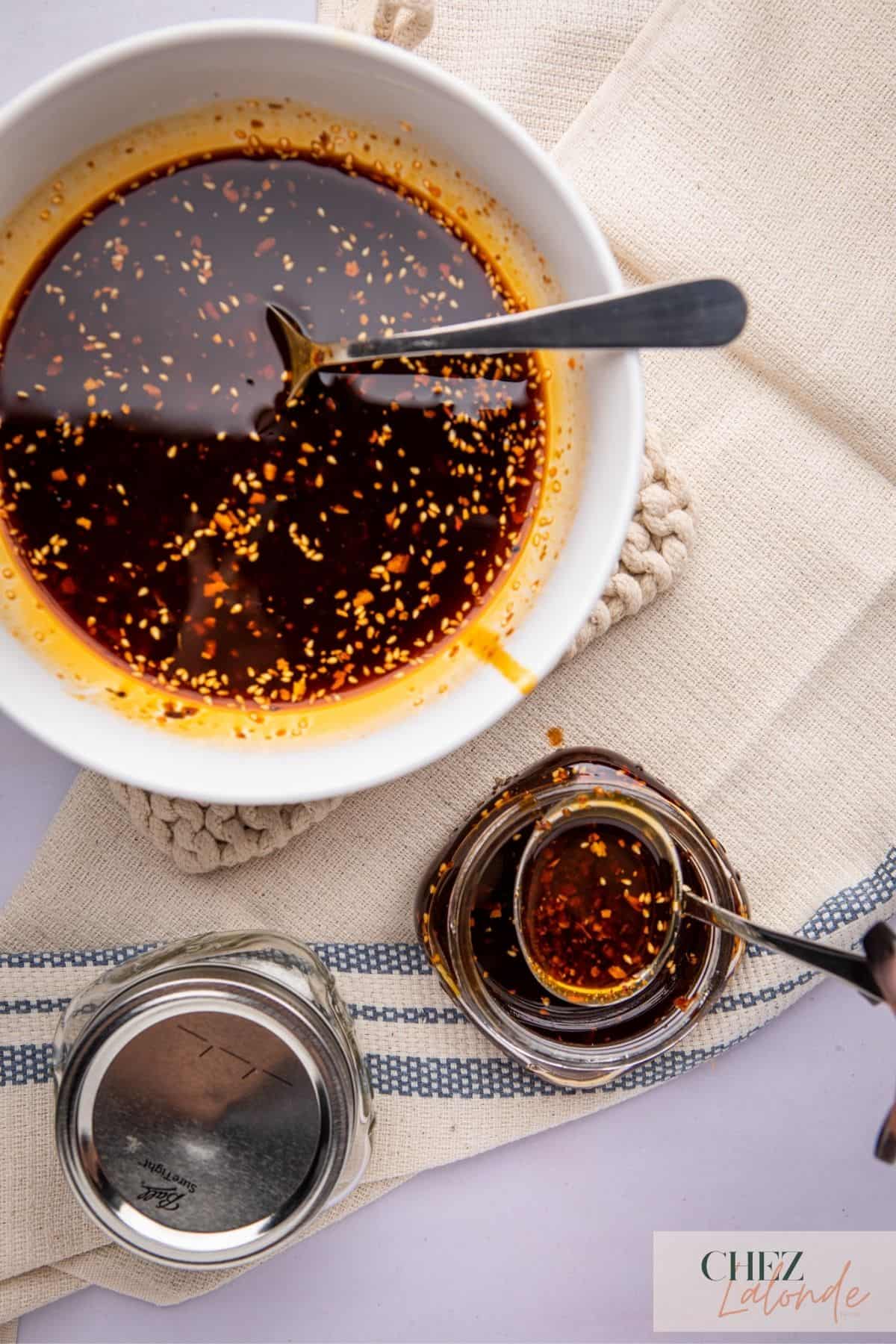
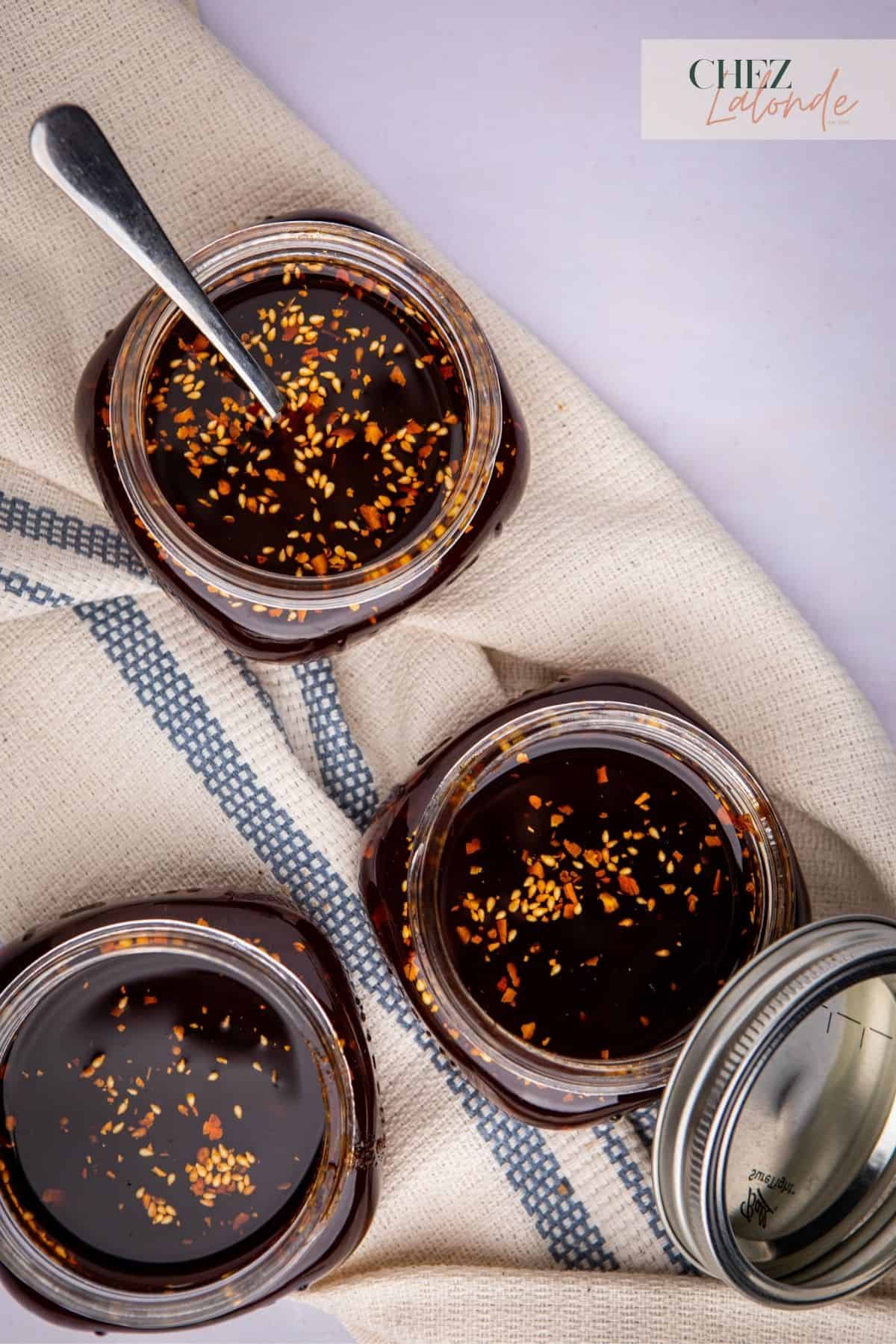
Tips
Substitutions and variation
I do not recommend substituting other ingredients in this homemade Chinese chili oil recipe since I have carefully crafted it for a distinct taste. Altering ingredients can change the flavor and consistency, especially with unique ingredients like Sichuan peppercorns. However, feel free to experiment with substitutions to match your personal preference.

How to store and what is the best way to prolong its shelf life?
- The best way to store your homemade chili oil is by using a glass container such as a Mason jar or something similar.
- Avoid using a plastic container.
- Before storing, sterilize the jar by boiling it in water for ten minutes. Dry the glass jar thoroughly and ensure no water is in the jar.
- Pour in the chili oil when it cools to room temperature and store in the refrigerator for up to six months.
- To prevent molding or spoiling, use a clean and dry spoon to scoop out the oil when consuming. If your utensils are wet or contaminated with other food, it will shorten the oil’s shelf life.
What dishes pair well with this spicy Chinese condiment?
This versatile condiment can pair well with many dishes, especially those that benefit from a spicy kick and a hint of umami flavor. Some of the best dishes to pair with Chinese chili oil include noodles soup, fried rice, Sichuan spicy red oil wonton, air fryer tofu with spicy garlic sauce, hot and sour soup, Chinese spicy pouched Chicken, Chinese cucumber salad, Bang Bang Chicken, Dan Dan noodles, grilled meats, and roasted vegetables. I have seen people even drizzle some on their pizza. However, the possibilities are endless, and you can experiment with different combinations to find your favorite pairing.





Side Note: Hey, I know this chili oil is versatile and goes well with almost anything. But please, please, don’t dip your sushi in it. That’s what wasabi is for, my friend. Let’s keep the sushi game strong and the chili oil where it belongs – on everything else.

FAQs about this chili oil recipe:
For more delicious Asian recipes, you may like these:
Congratulations, you have the recipe to make homemade Chinese chili oil! From sourcing the ingredients to controlling the temperature while cooking the oil, I have shared with you all the necessary tips and techniques to make this traditional condiment. I hope you found the fun facts and knowledge shared in this post helpful in your chili oil-making journey. Don’t be afraid to adjust the spiciness level to your liking and experiment by drizzling this versatile and flavorful spicy goodness onto any food you choose.
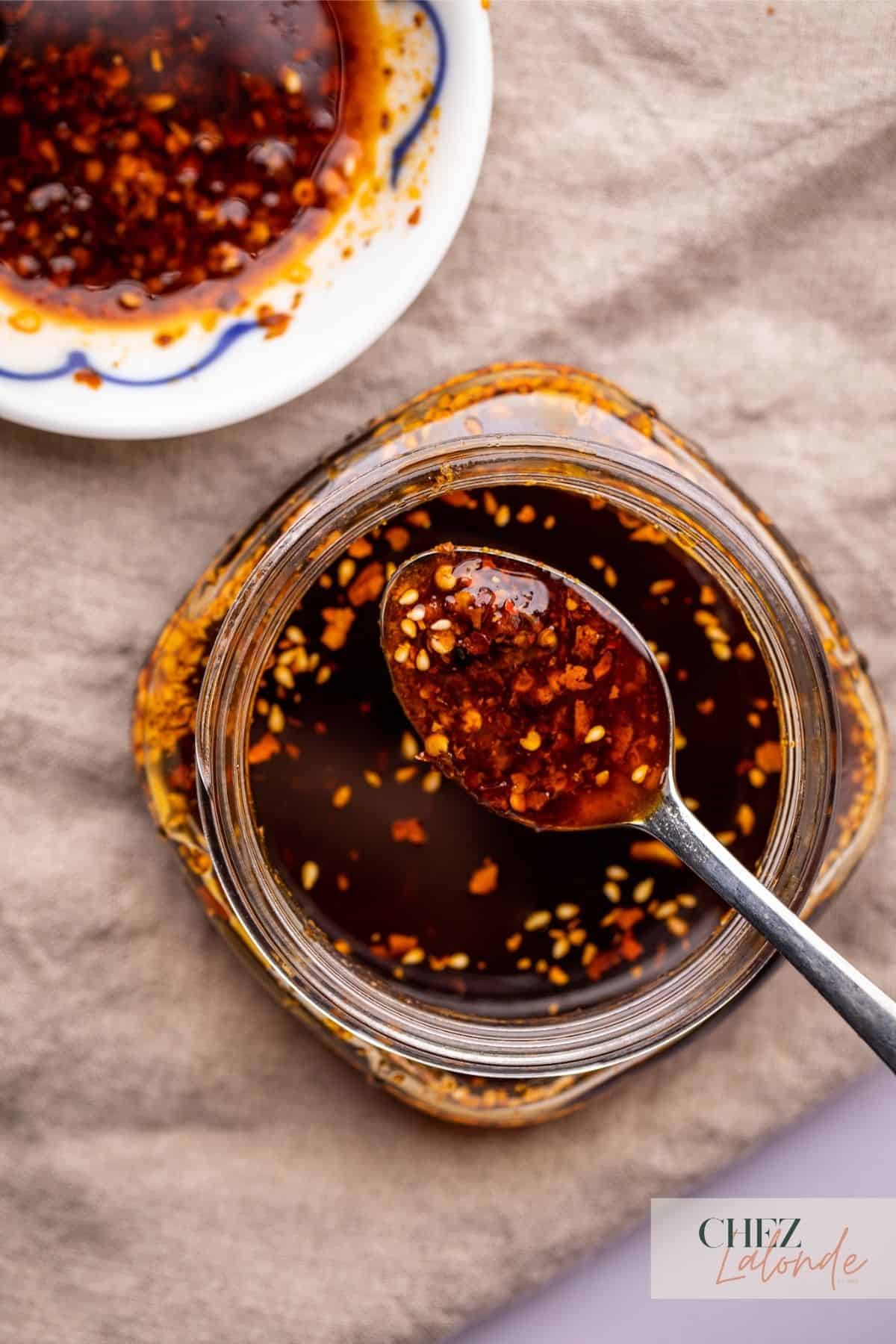
Thanks for reading this post on how to make homemade Chinese chili oil! I hope you found it helpful and informative. If you enjoyed this recipe and want to see more like it, follow my blog and social media accounts for future updates. Don’t hesitate to comment with any questions or feedback; I’d love to hear from you!
Thank you for reading, and happy cooking!
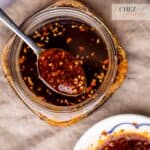
How To Make My Ultimate Homemade Chinese Chili Oil
- Total Time: 0 hours
- Yield: 32 Tablespoons 1x
Description
Looking to add some bold flavor to your Chinese dishes? Look no further than this homemade Chinese chili oil recipe. Made with fragrant Sichuan peppercorns and chili flakes, this fiery condiment is a staple in Chinese cuisine. Learn how to make it yourself with this easy-to-follow Sichuan recipe.
Ingredients
Group 1 – Infused Oil ingredients:
2 Cups of Rapeseed oil
2.0 oz of Green onion cut into 3 to 4 inches sections
2.0 oz of sliced fresh ginger
1.5 oz of Whole garlic cloves
2.0 oz of Halved Shallot
1 stick of Chinese Cassia Cinnamon (Each stick is around 4 inches long)
4 Tablespoons of Sichuan Peppercorn (I used Dai Hong Pao, or you can use another kind of Sichuan peppercorn)
4 pieces of Dried Bay Leaves
4 pieces of Star Anise
1 Teaspoon of Dried cloves
12 pieces of White whole cardamom
1 1/2 Teaspoons of Fennel Seeds
Group 2 – Chili Oil Base ingredients:
1 Cup of Sichuan red pepper flakes
1 1/2 Tablespoons of White Sugar
1 1/2 Teaspoon of Sea Salt
2 Tablespoons of toasted sesame Oil
1 1/2 teaspoons of Five spice powder
Optional add-in:
1 Teaspoon of MSG (Monosodium glutamate)
Instructions
- Step One – Gather all ingredients and measure them accurately. Slice the ginger thickly to avoid burning, and cut the shallot in half after peeling. Don’t worry about chopping the garlic or the aesthetics of the aromatics, as they will be discarded later. Avoid cutting them too finely to prevent burning during the slow frying process.
- Step Two – Combine (Group 1 ingredients) rapeseed oil, aromatics, and spices in a small saucepan and cook over medium-low heat until small bubbles form. Use a cooking thermometer to check the temperature and lower the heat once it reaches 230 to 250F.
- Step Three – Maintain the temperature between 230 to 250F for at least 30 minutes and up to an hour. Monitor the heat and prevent it from going above 250F. The longer you infuse the oil, the more flavorsome it will become, so be patient.
- Step Four – Mix (Group 2 ingredients) Sichuan pepper flakes, sugar, salt, and sesame oil in a separate heat-proof bowl while the oil infuses. MSG can be added or omitted at this point. Set the mixture aside.
- Step Five – After the oil is infused for your desired time (30 mins, 45 mins, or an hour), remove all the spices and aromatics from the infused oil with help using a metal fine-mashed strainer and discard them.
- Step Six – Carefully heat the oil to 380F, then slowly pour it into the Sichuan pepper mixture in three separate additions, being cautious as it will sizzle vigorously.
- Step Seven – Allow the chili oil to cool to room temperature, then transfer it to a glass or Mason jar. It can be stored in the refrigerator for up to 6 months. You can let it infuse for even more flavor for a few extra days before using it. Enjoy!
Notes
I do not recommend substituting other ingredients in this homemade Chinese chili oil recipe since I have carefully crafted it for a distinct taste. Altering ingredients can change the flavor and consistency, especially with unique ingredients like Sichuan peppercorns. However, feel free to experiment with substitutions to match your personal preference.
- Prep Time: 15 minutes
- Cook Time: 30 minutes to 60 minutes
- Category: Asian Cuisine
- Method: Infusion
- Cuisine: Chinese
Keywords: Chinese, Chili oil, homemade, Sichuan-style, Sichuan spices, Spicy Chinese condiment.


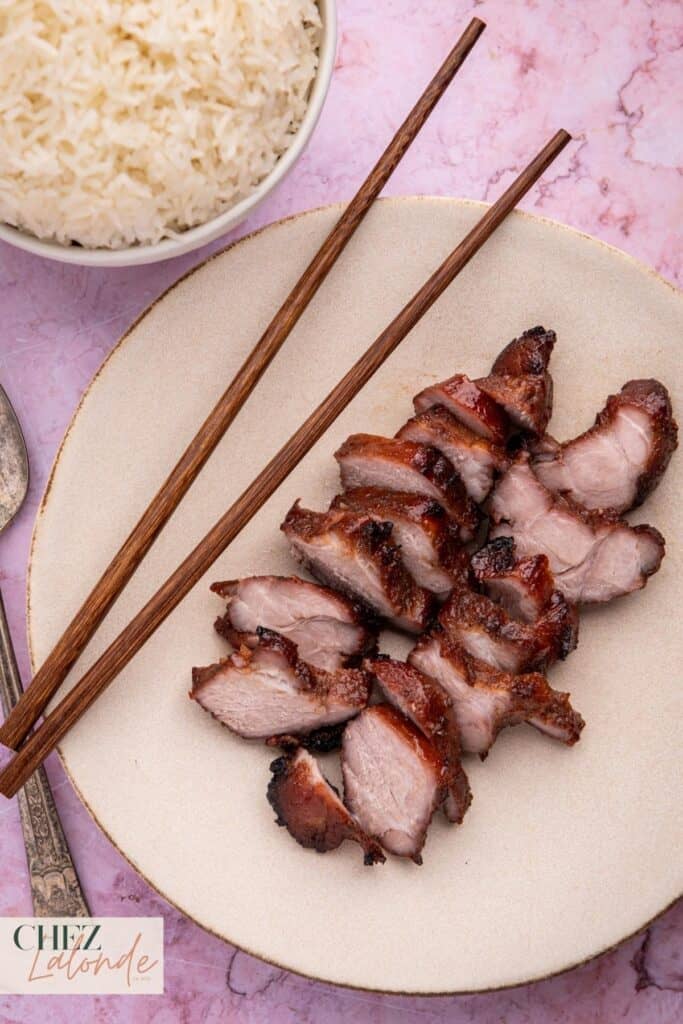
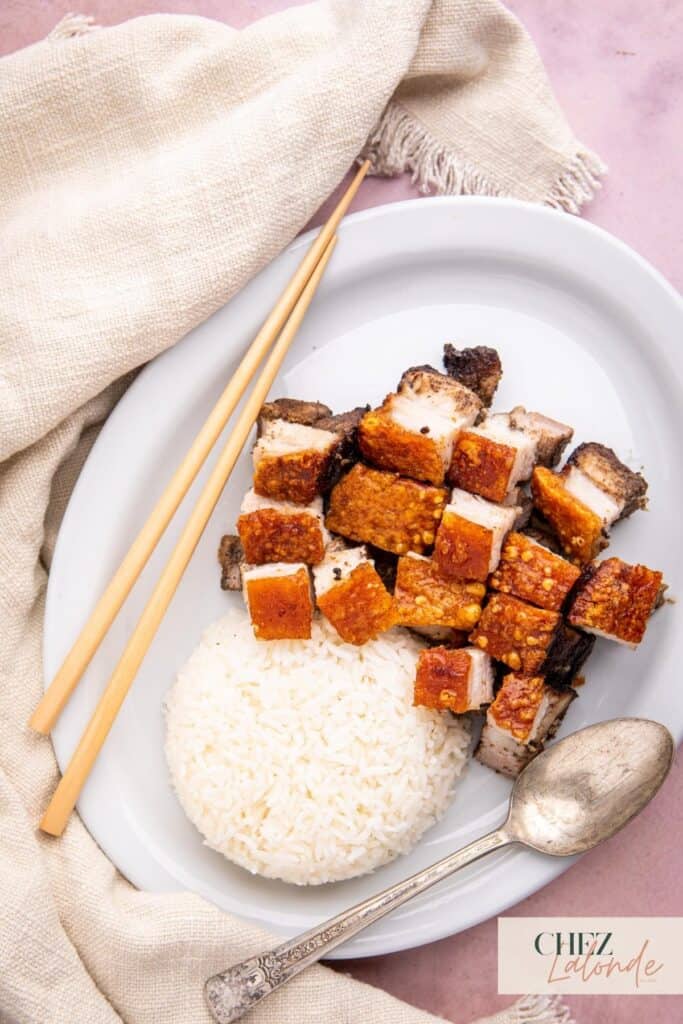
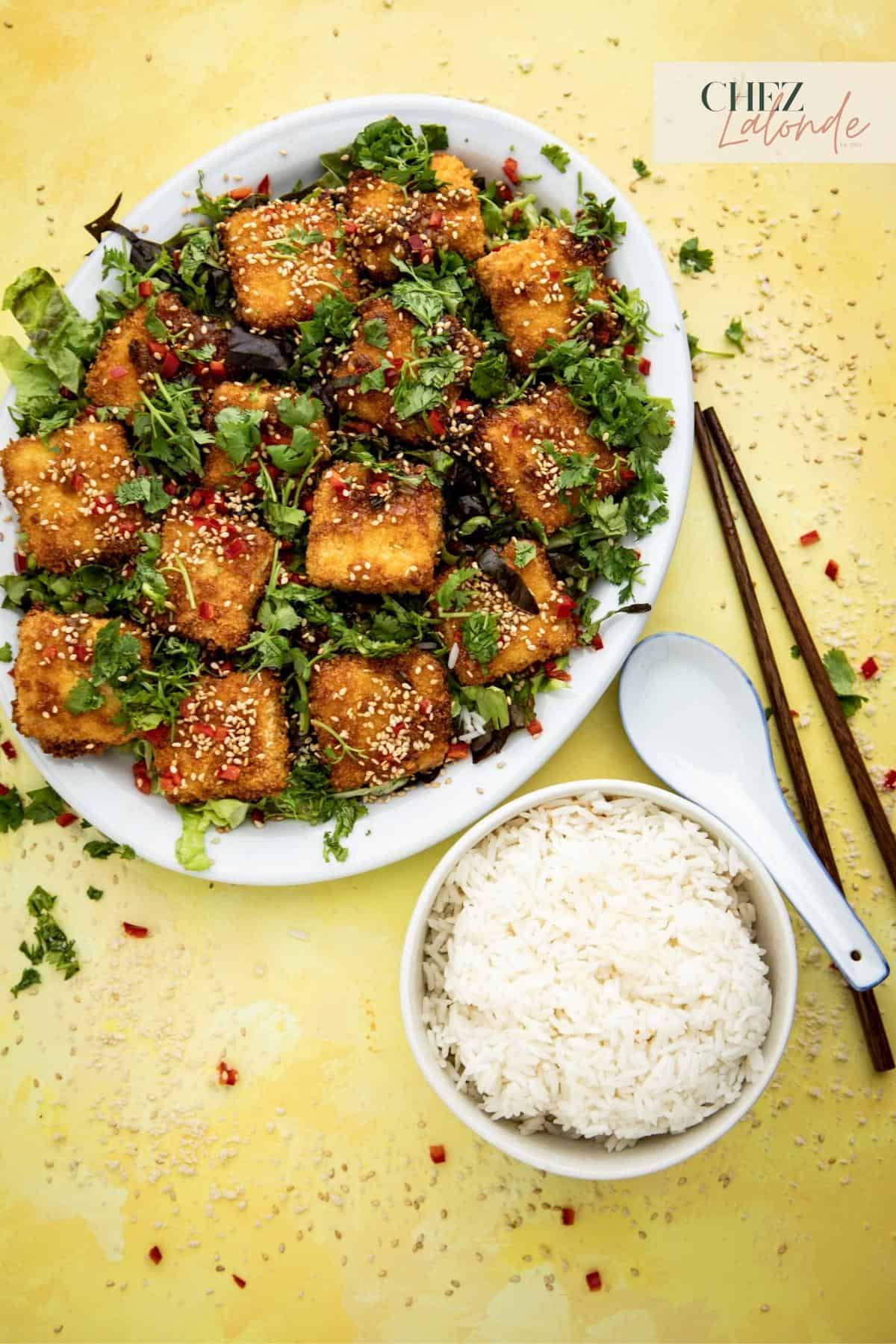


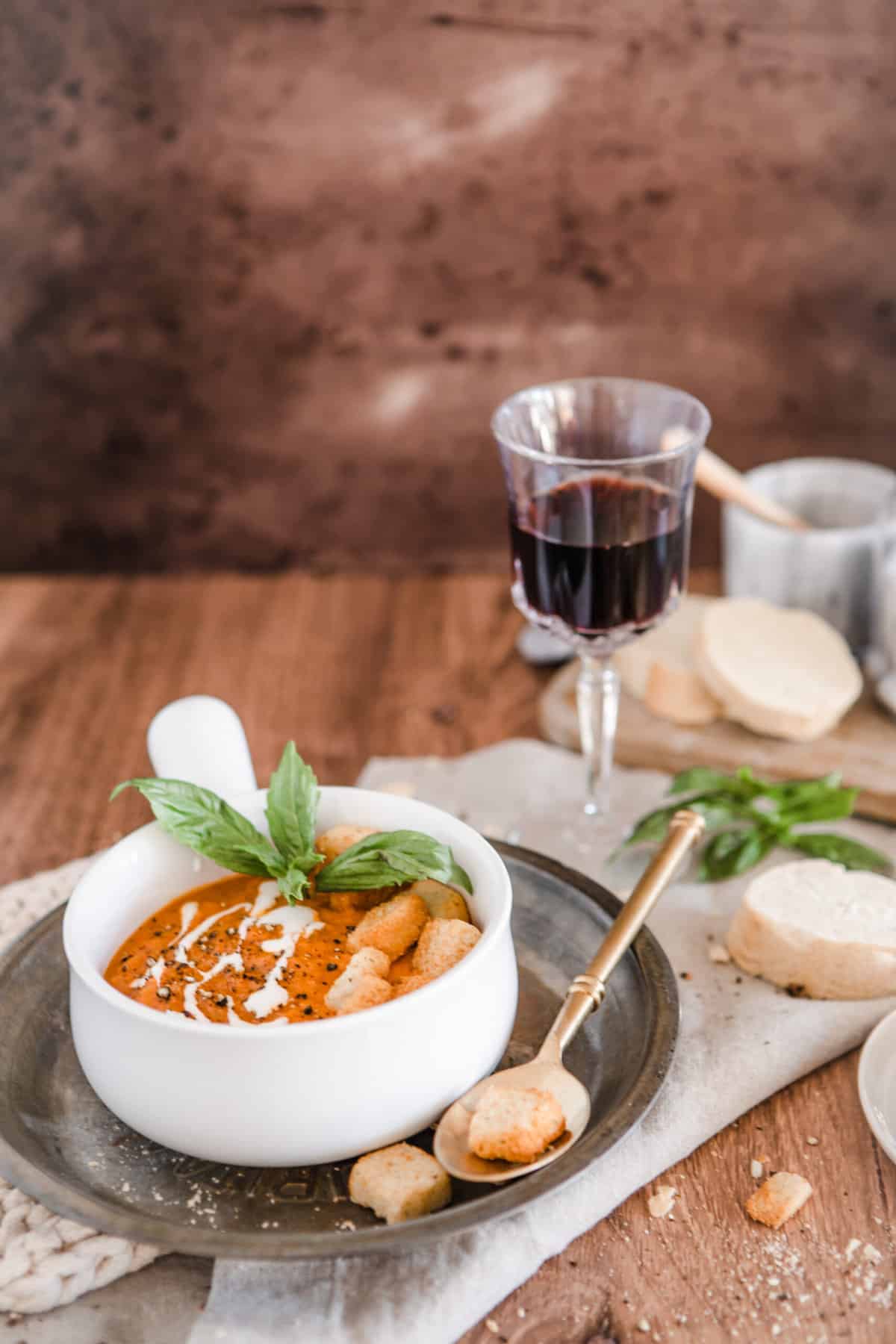
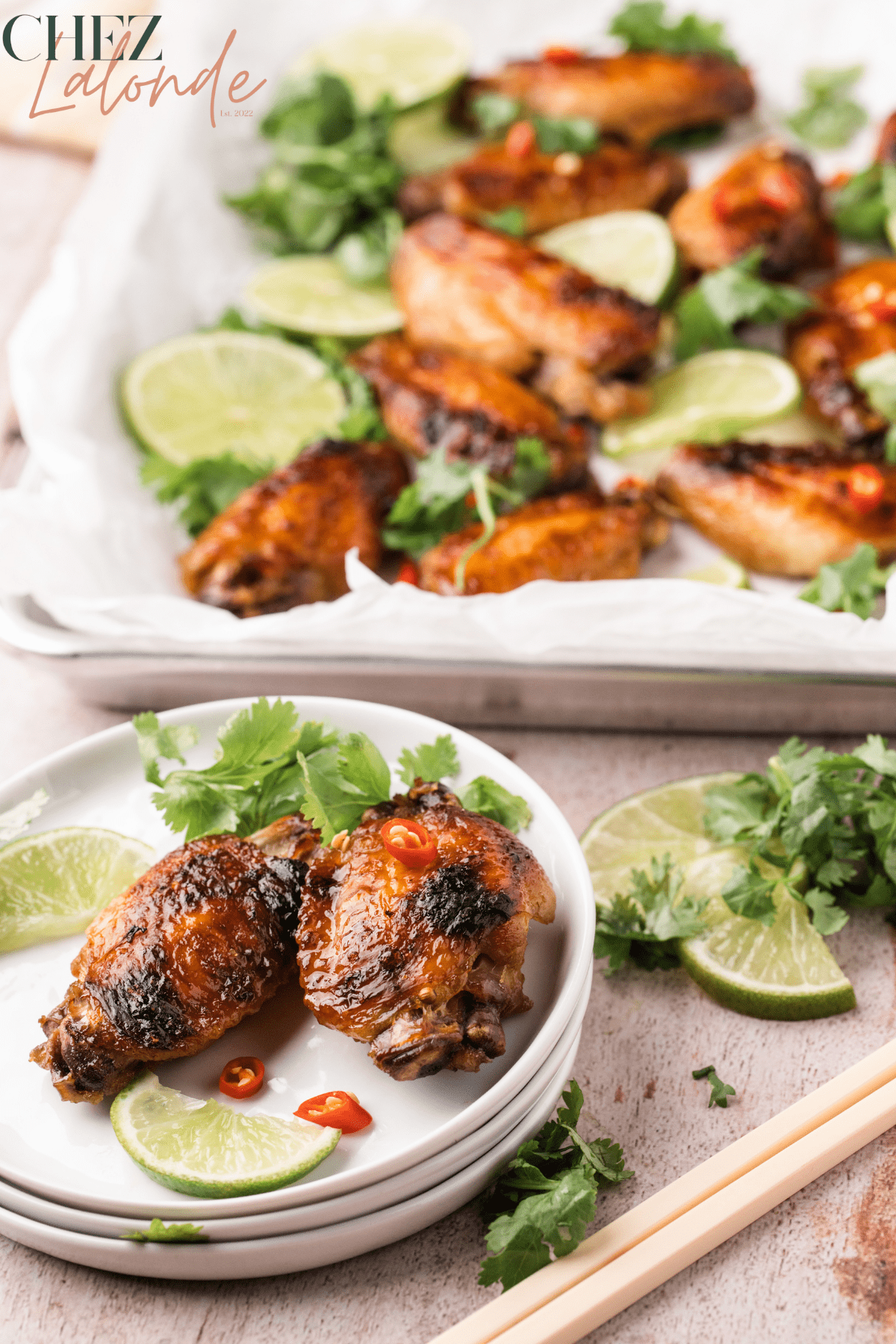
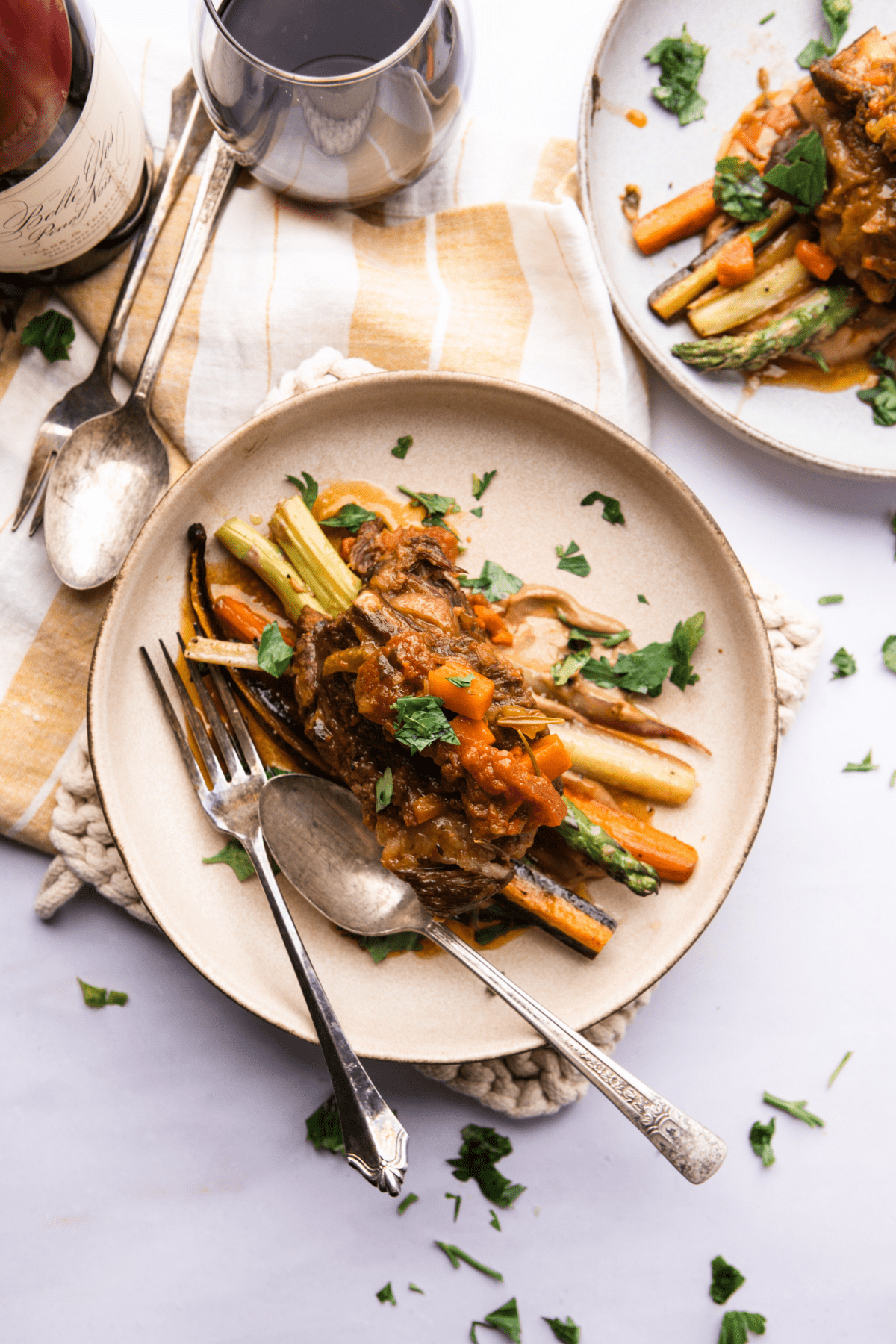
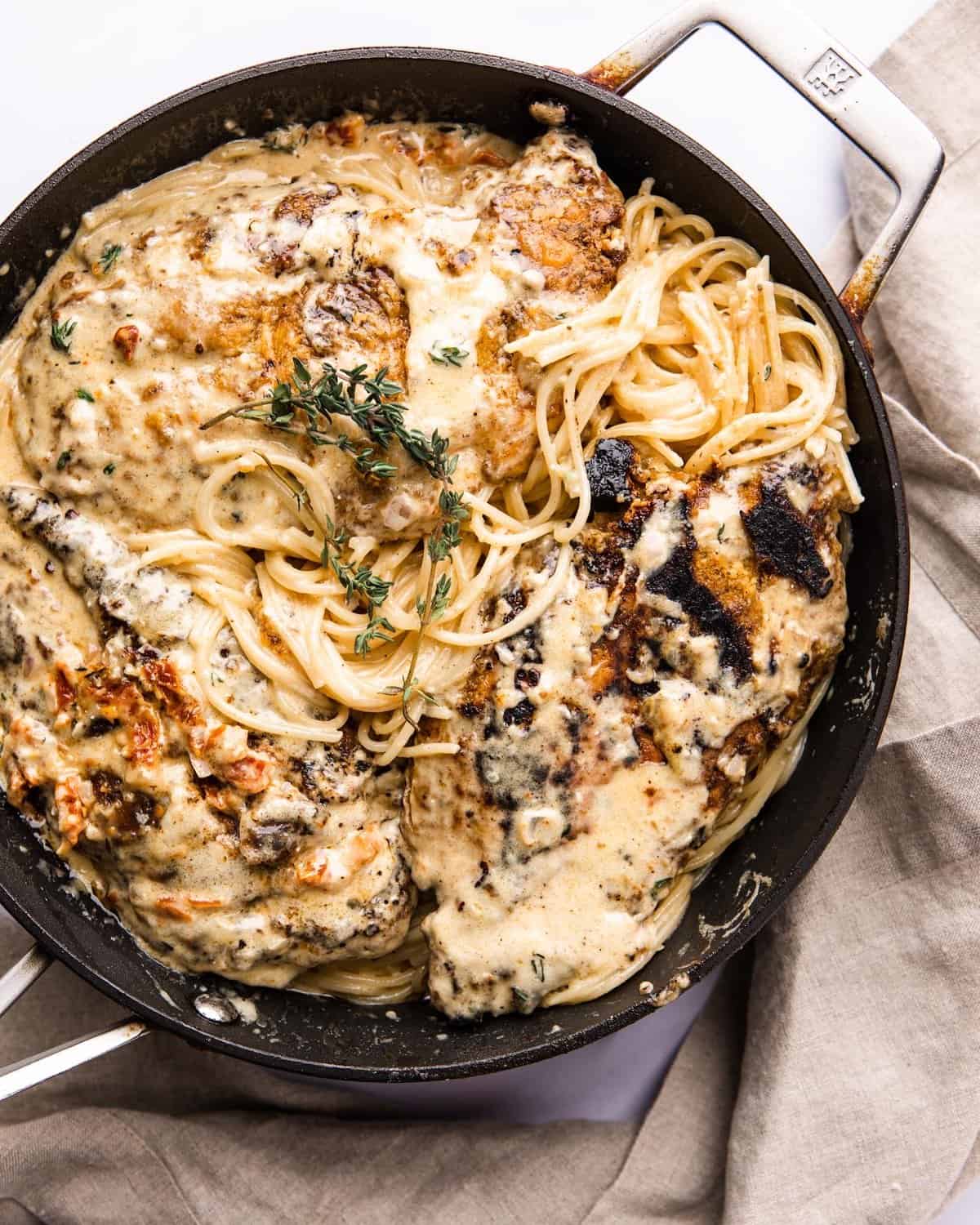






This was delicious! Thank you for sharing!
★★★★★